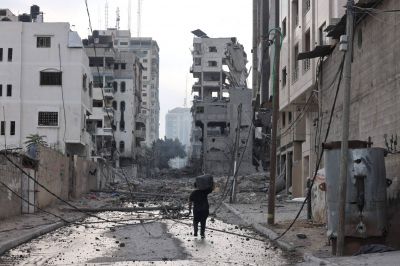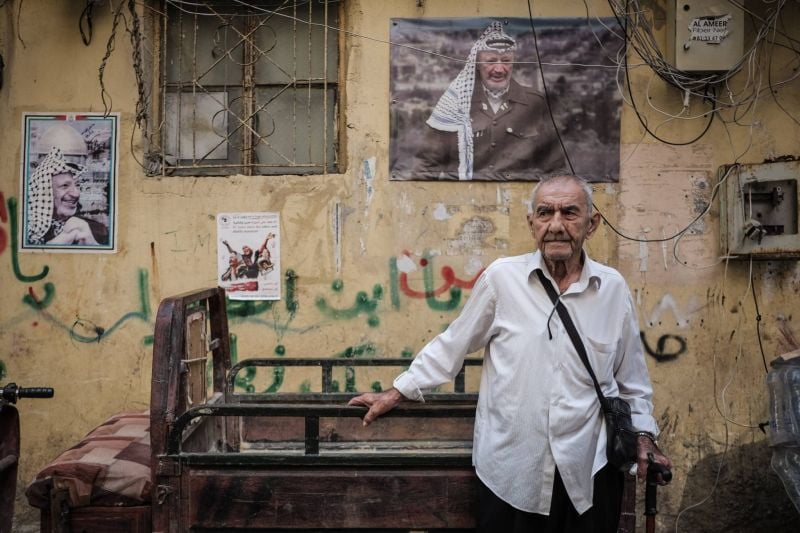
Hadi Abed, a Shatila camp resident, who came from Palestine and sought refuge in Lebanon, poses for a portrait on Oct. 9, 2023. (Credit: João Sousa/L’Orient Today)
BEIRUT — In the heart of Shatila camp, a crowded Palestinian refugee community in Lebanon, life goes on amidst the barrage of motorbikes and the vibrant sounds of solidarity.
Revolutionary songs blare from passing cars, and even tuk tuks, echoing the sentiments of hope and resilience that permeate the streets.
In an unparalleled and unprecedented scale of operation, Hamas executed a daring incursion into Israeli-controlled territory in the early hours of Saturday, subsequently launching thousands of rockets toward Israel, with some reaching as far as Tel Aviv and Jerusalem.
Simultaneously, hundreds of Hamas militants breached Israeli borders through sea, land and air, using motorized paragliders — a historic event not witnessed since the establishment of Israel in 1948.
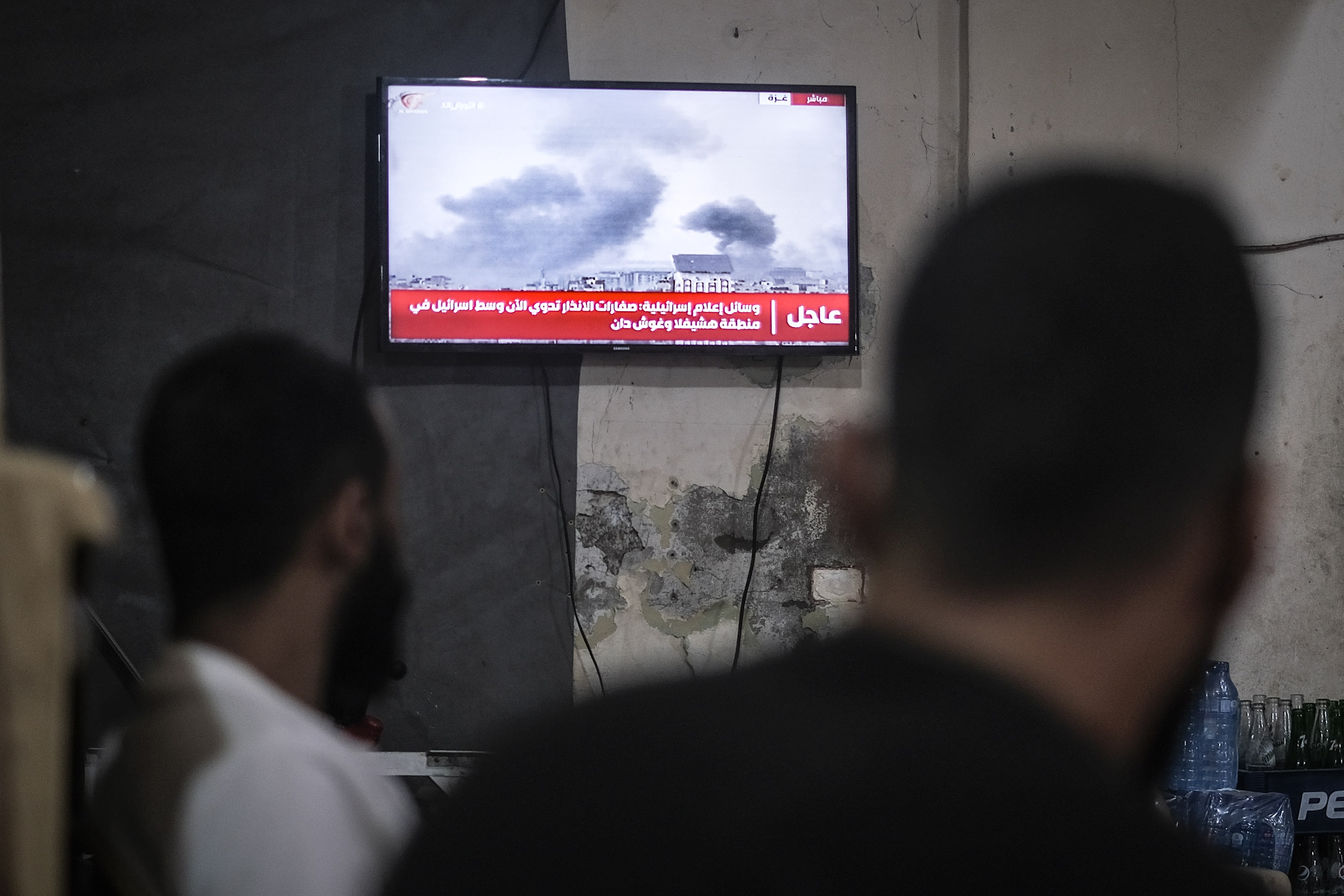 Shatila camp residents keep a watchful eye on the news to keep up with the Hamas-Israeli war. Oct. 9, 2023. (Credit: João Sousa/L’Orient Today)
Shatila camp residents keep a watchful eye on the news to keep up with the Hamas-Israeli war. Oct. 9, 2023. (Credit: João Sousa/L’Orient Today)
This operation draws parallels to the unexpected offensive in 1973 when Egyptians and Syrians initiated hostilities against Israel during Yom Kippur.
The timing of this military operation was strategic, taking place just one day following the 50th anniversary of the 1973 war, during which Syria and Egypt caught Israel off guard and revealed significant vulnerabilities in its early warning system.
“It is a huge event — a big turnover to witness after around 20 or 25 years of a Palestinian-Israeli political deadlock,” Mohammad Daoud, a 61-year-old shop owner in Shatila, says.
He gazes at the portrait of Yasser Arafat, former chairman of the Palestine Liberation Organization (PLO), propped up on one of the shelves.
Daoud’s elation at witnessing Hamas militants bombard Israeli settlements is tempered by concern as he points to his TV, broadcasting the destructive scenes in Gaza where Israeli forces launched a barrage of retaliatory strikes, killing hundreds.
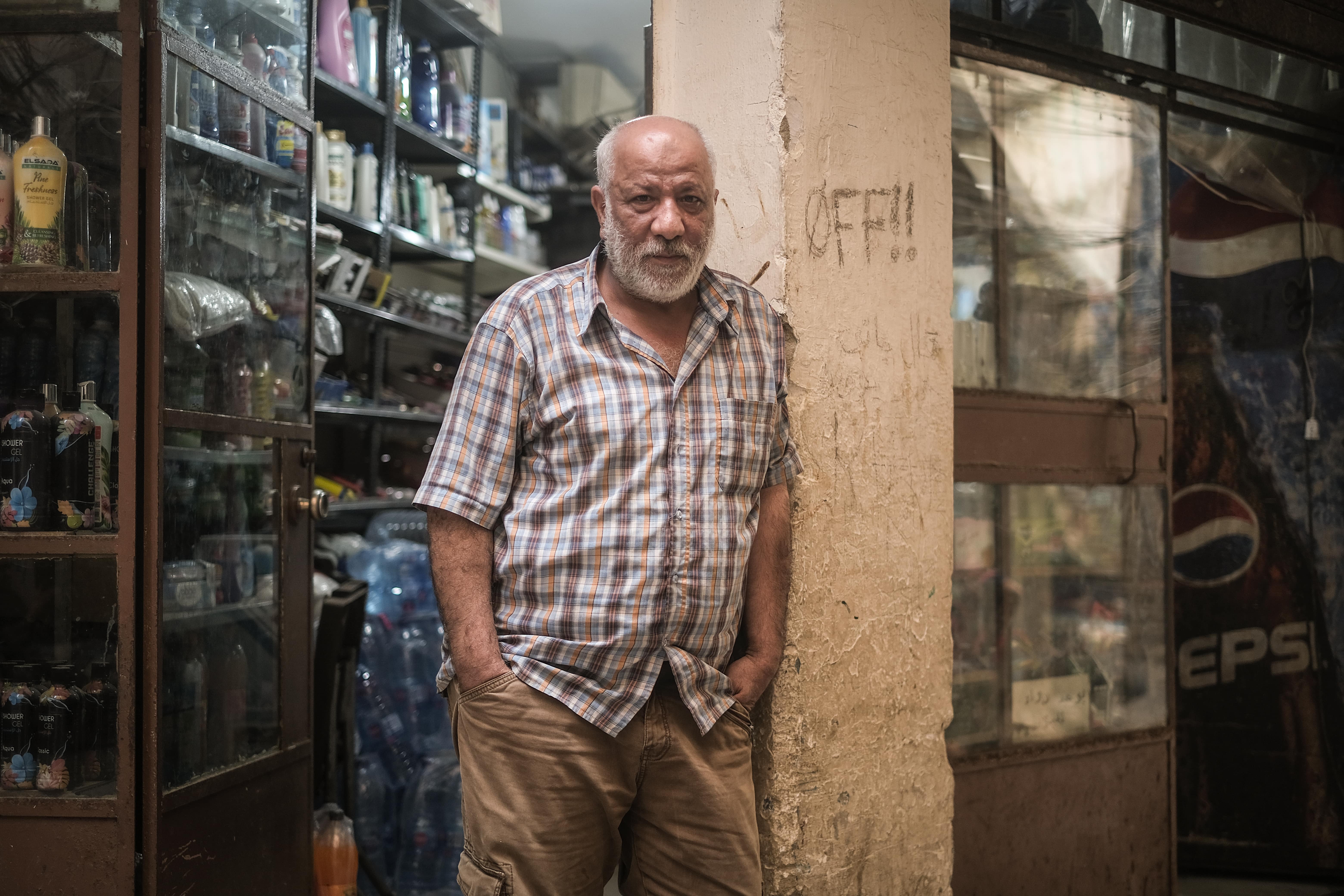 Mohammad Daoud, a 61-year-old shop owner in Shatila, poses for a portrait. Oct. 9, 2023. (Credit: João Sousa/L’Orient Today)
Mohammad Daoud, a 61-year-old shop owner in Shatila, poses for a portrait. Oct. 9, 2023. (Credit: João Sousa/L’Orient Today)
“I am happy but deeply concerned at the same time,” he tells L’Orient Today. “There was an undeniable demonstration of might on the first day — that, as a resistance, it has the power and courage to raid [Israeli] military positions and take over sizable areas — but I am worried about the retaliation on Gazans.”
Amid the hum of everyday life — children on their way back from school, women shopping for groceries, and men restocking their store shelves — everyone keeps a watchful eye on the news.
The scene is both ordinary and extraordinary: a community living in the shadow of displacement, witnessing a historic episode between Israel and Hamas.
Daoud has a determination that “one day, [he] will return to Palestine.”
“I have no doubt, we have the persistence and will that it takes to return.”
Daoud has lived his entire life in Shatila camp, where his parents sought refuge after leaving Haifa, Palestine, and which was the scene of a massacre in 1982 that claimed the lives of thousands of Palestinian and Lebanese civilians.
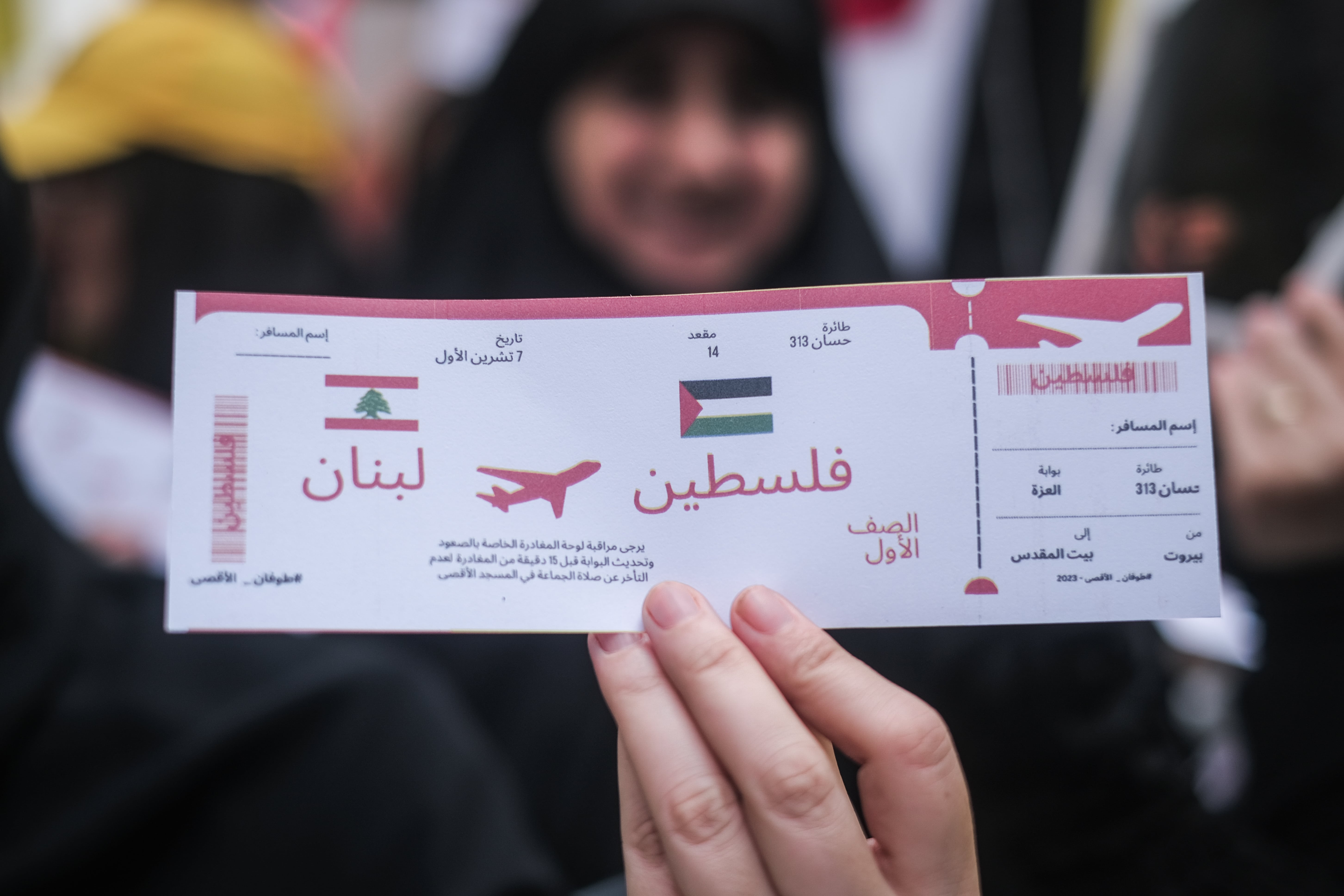 A Hezbollah supporter holds a symbolic Lebanon-to-Palestine "airplane ticket" at a Hezbollah rally in support for the Palestinian cause, following the Hamas attack on Israeli ground, Beirut, Oct. 8, 2023. (Credit: João Sousa/L’Orient Today)
A Hezbollah supporter holds a symbolic Lebanon-to-Palestine "airplane ticket" at a Hezbollah rally in support for the Palestinian cause, following the Hamas attack on Israeli ground, Beirut, Oct. 8, 2023. (Credit: João Sousa/L’Orient Today)
“We are living in a series of events, one after the other — 1975, ‘78, ‘82, ‘85 — each one makes you forget the one before it due to its enormity,” Daoud says.
A lifetime of struggle
Majid Fayez, a 70-year-old resident of Shatila, says his seven decades of life have a clear demarcation line – the 70 years he lived before Oct. 7, 2023, and whatever comes after it. Walking to work Monday afternoon, he says the date marks a “glorious” turning point in the Palestinian struggle.
“Since the beginning of the Palestinian struggle, it has been the Israeli soldier who drags young boys and girls [into detention]. For the first time in the history of the Palestinian revolution, our youth are the ones who dragged captured Israeli soldiers,” taking them hostages, Fayez says.
Fayez’s mother was 13 years old and his father 16 when they left Palestine in 1948 and came to Lebanon, hoping for a swift return that never materialized.
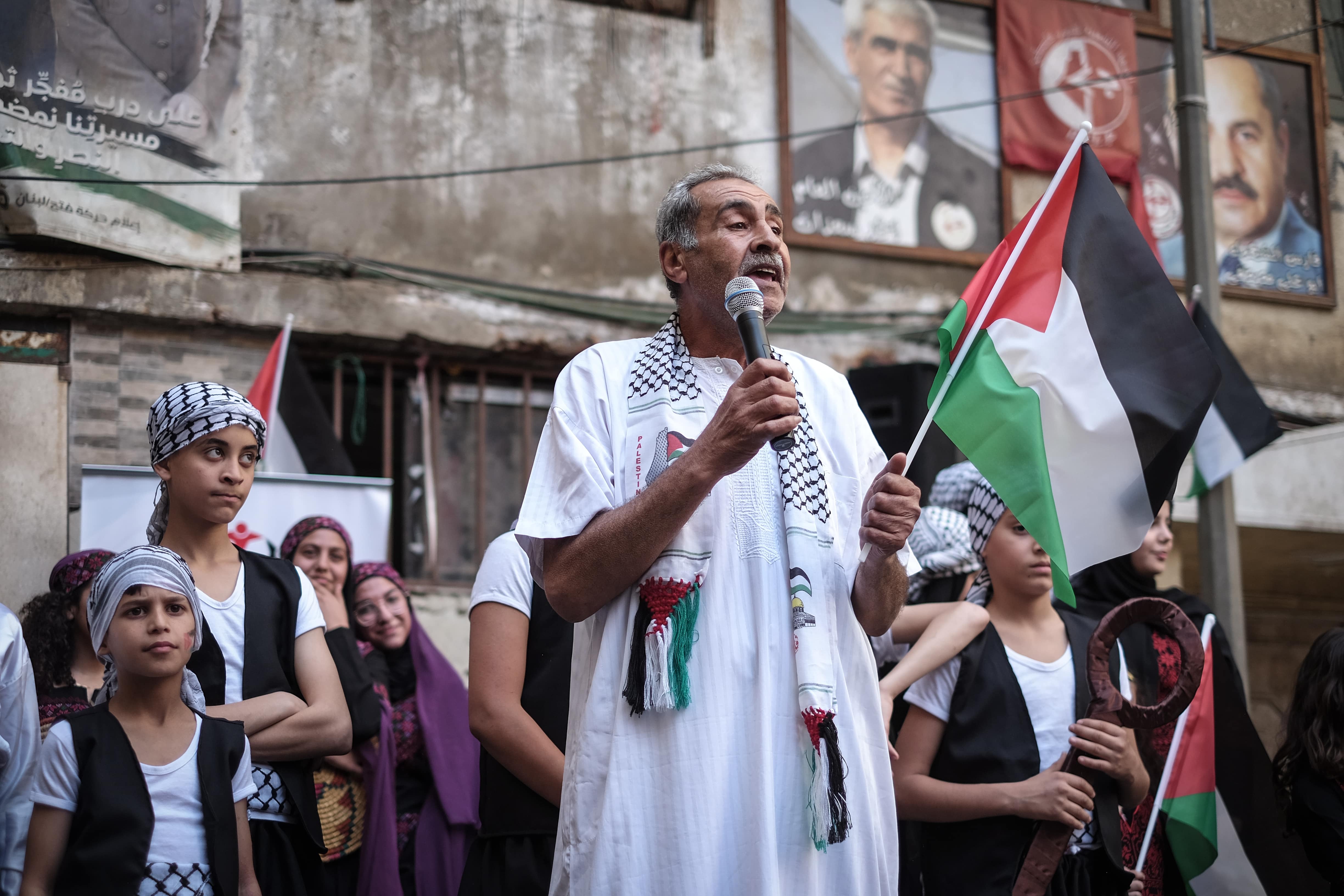 Majid Fayez speaks during the 75th Nakba commemoration in Shatila Camp, Beirut, May 13, 2023. (Credit: João Sousa/L’Orient Today)
Majid Fayez speaks during the 75th Nakba commemoration in Shatila Camp, Beirut, May 13, 2023. (Credit: João Sousa/L’Orient Today)
He remembers the hope that swept through Palestinians during the 1973 attack on Israel.
“We were happy at first because the attack came from more than one front,” Fayez says.
But it was followed by regrettable setbacks, he adds.
A resident of Shatila since 1973, Jamila Lutfi, 62, stands outside one of the corner shops, orders a small cup of coffee and watches the news.
She then walks back to her humble stall where she sells fresh snacks — carrots, pomegranate seeds and corn on the cob.
For her, the Hamas attack on Israeli settlements is a source of pride. She sees it as a “stepping stone towards the liberation of Palestine” and the long-awaited return of Palestinians to their homeland.
Born to parents who left Palestine in 1948, she recalls their optimism, leaving their doors locked, expecting to return “in a matter of days.”
"It's been 75 years," she says.
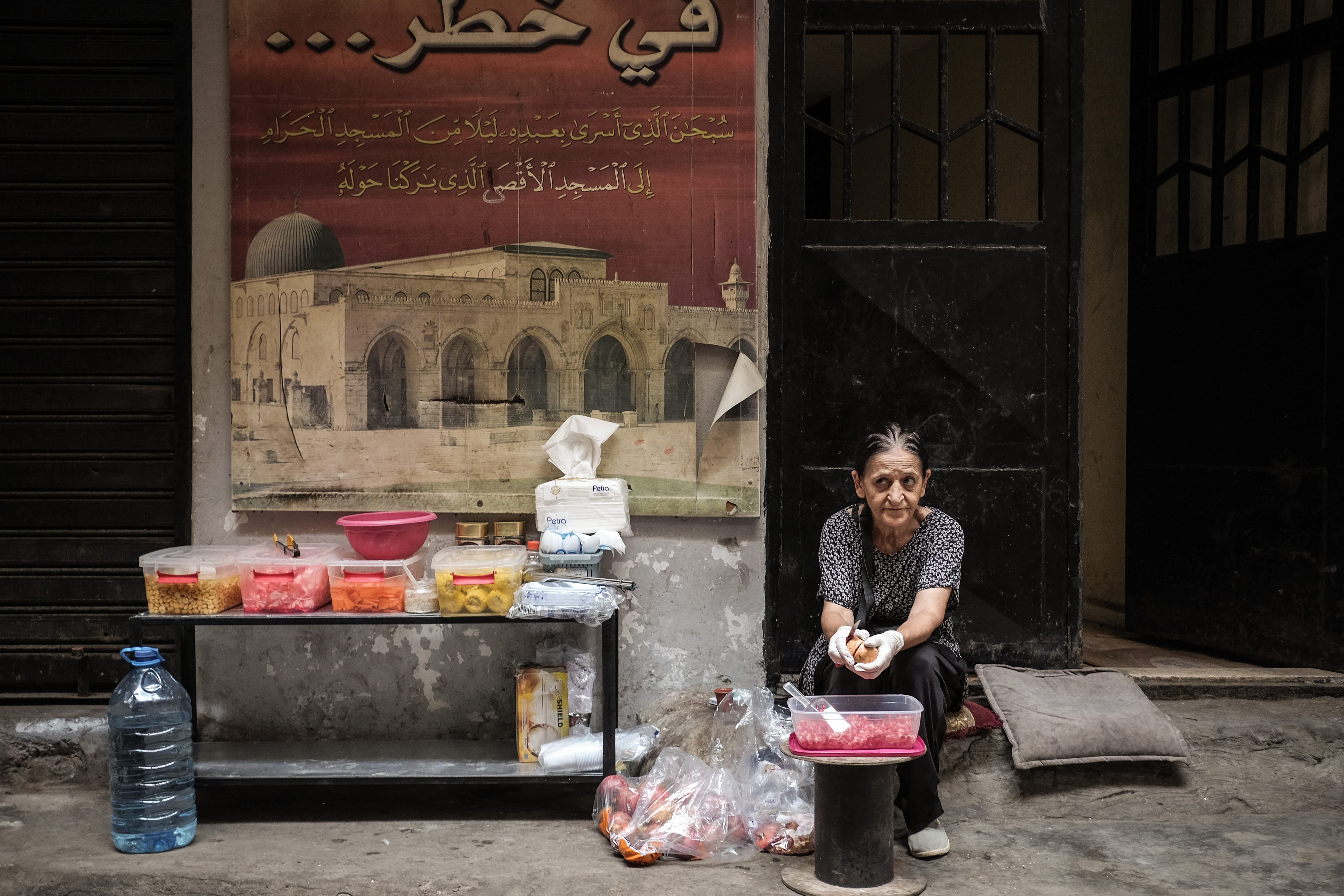 Jamila Lutfi, 62, sits at her stall selling fresh snacks in Shatila camp, Beirut. Oct. 9, 2023. (Credit: João Sousa/L’Orient Today)
Jamila Lutfi, 62, sits at her stall selling fresh snacks in Shatila camp, Beirut. Oct. 9, 2023. (Credit: João Sousa/L’Orient Today)
Despite the heavy Israeli retaliation on Gaza, Lutfi, who survived the 1982 Sabra and Shatila massacre along with her family by escaping the camp, remains joyful about the ongoing events.
“Even if we lose many martyrs, it’s okay and we won’t be affected,” she says. “We are accustomed to it.”
In another corner of the camp, Hadi Abed, well into his 80s, sits in his convenience shop, waiting for his sons to return with merchandise.
Abed came to Lebanon, through Egypt, at the age of 16, carrying with him the keys to his house in Haifa, now occupied by Israel. He still keeps those keys as a reminder of what was lost.
“If only I could go back to Palestine, I would sell everything I own and leave this moment,” Abed says. His eyes turn teary and his voice quivers.
He still remembers his home in Haifa, surrounded by its olive trees, though wonders if they still stand.
“All Arab nations are traitors because they don’t help Palestinians,” he says.
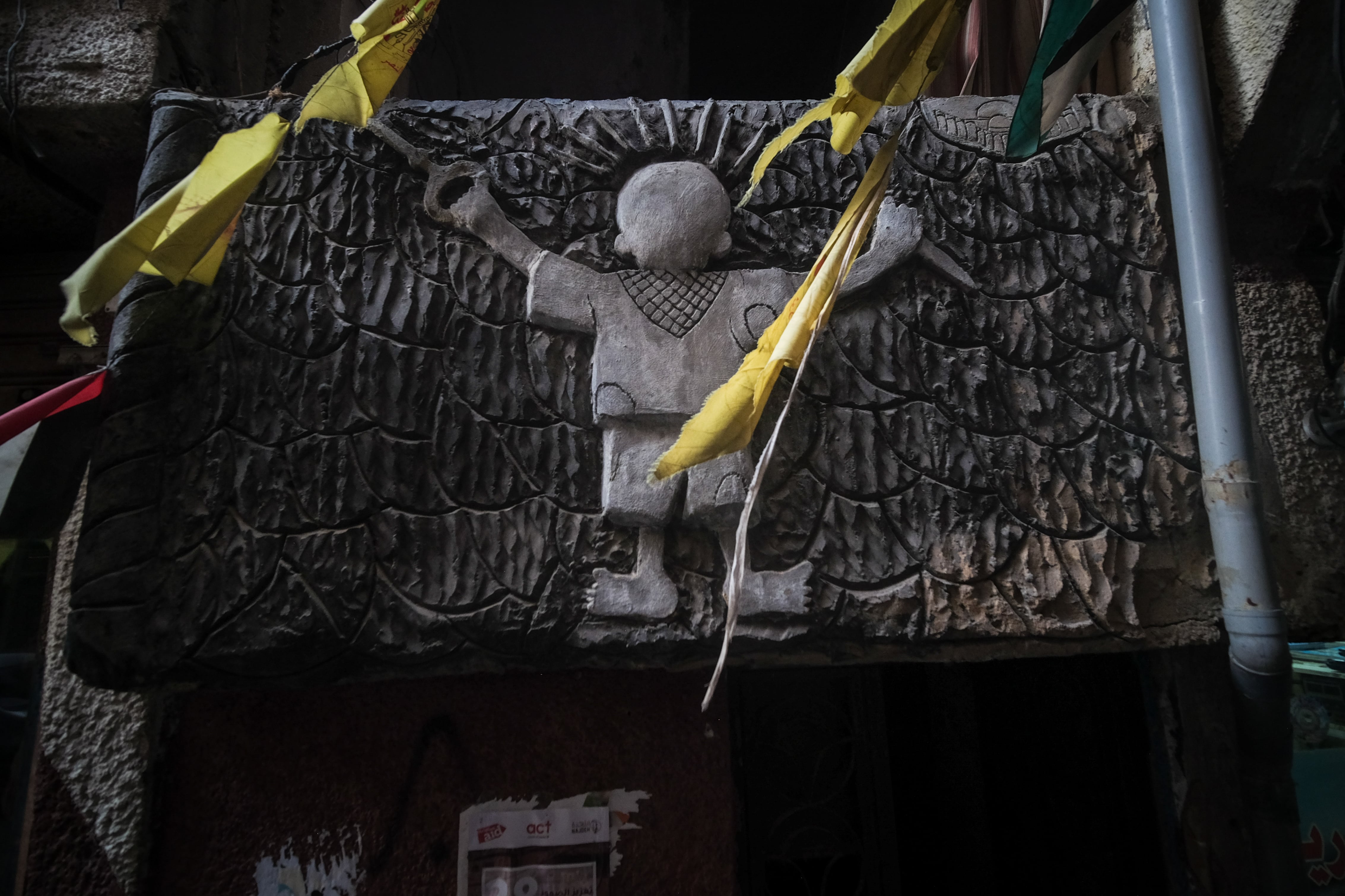 A Handala icon sculpture decorates a building facade in Shatila Camp, Beirut, Sept. 13, 2022. (Credit: João Sousa/L’Orient Today)
A Handala icon sculpture decorates a building facade in Shatila Camp, Beirut, Sept. 13, 2022. (Credit: João Sousa/L’Orient Today)
